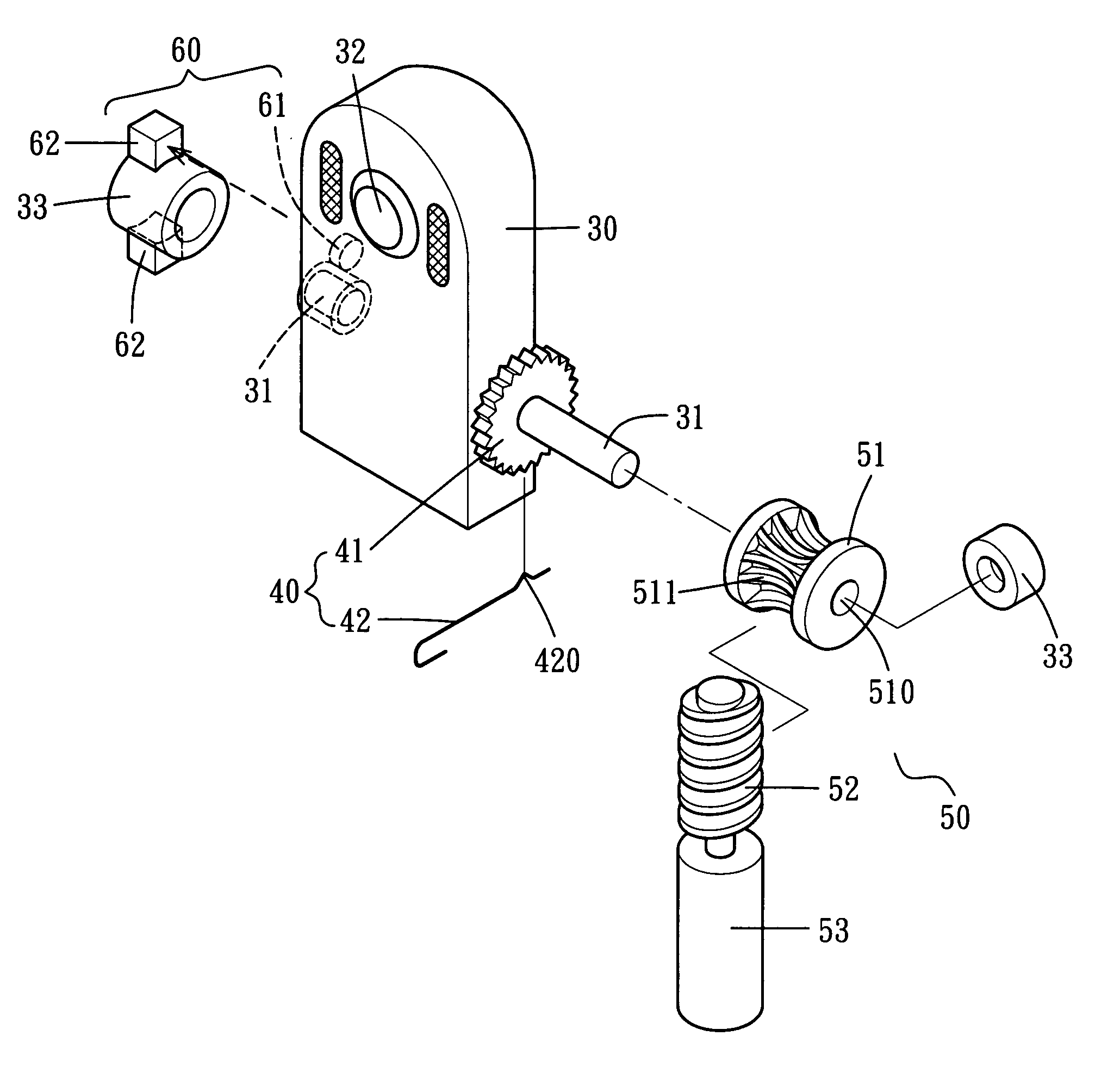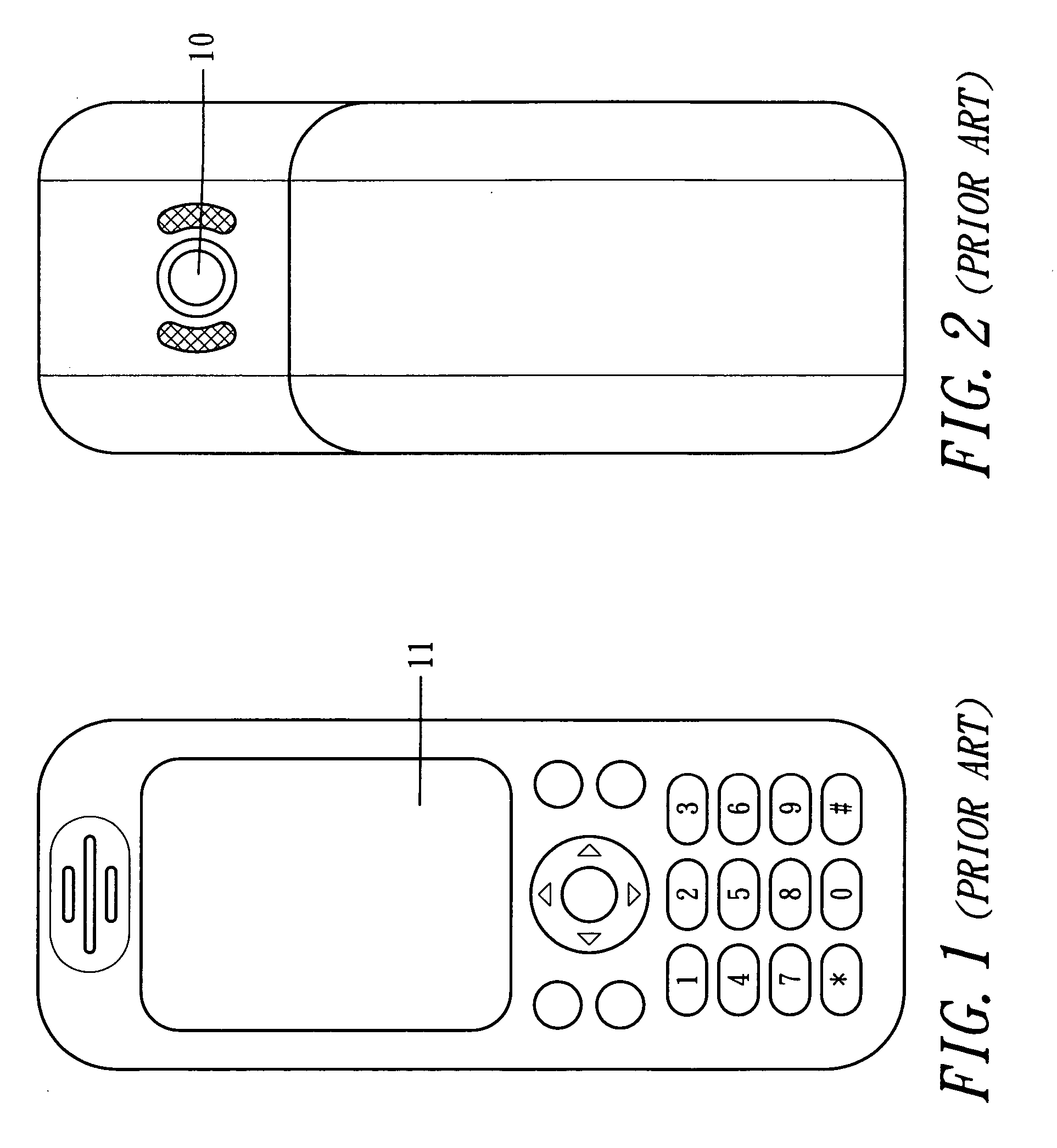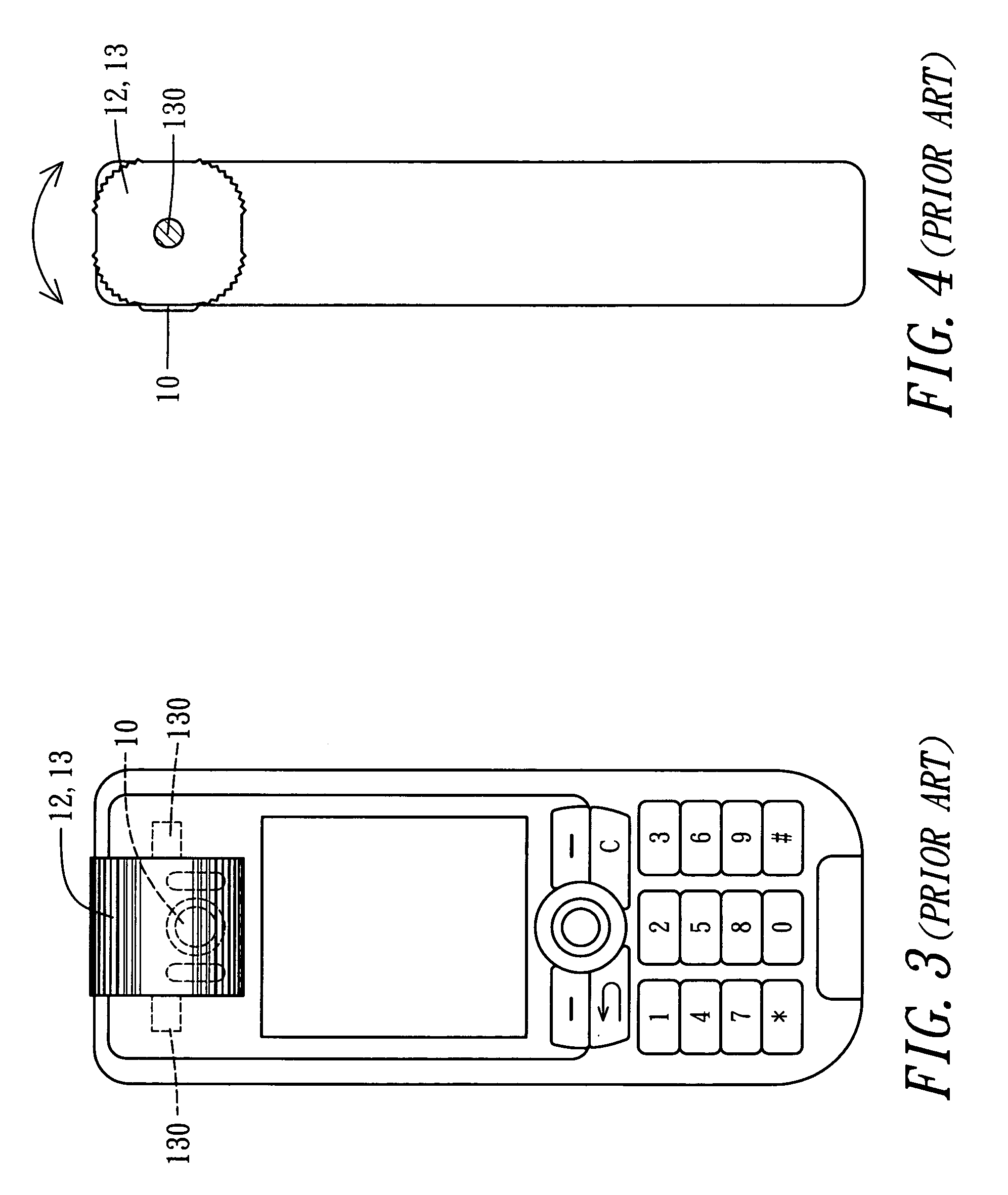Direction-turning device for the lens of a camera phone
- Summary
- Abstract
- Description
- Claims
- Application Information
AI Technical Summary
Benefits of technology
Problems solved by technology
Method used
Image
Examples
Embodiment Construction
[0026] As shown in FIGS. 5, 6 and 7, a first preferred embodiment of a direction-turning device for the lens of a camera phone 20 in the present invention includes a lens base 30, a positioning unit 40, a driving unit 50 and a restricting unit 60. The camera phone 20 is provided with a groove 21 cut in the central top portion of the rear side.
[0027] The lens base 30 having exactly the same shape and size as the groove 21 for being fitted in the groove 21 is provided with a pivot 31 extended outwards eccentrically at two sides respectively and fitted in a pivot hole in the interior wall of the groove 21, a lens 32 located in the rear side and two supporting members 33 respectively used to support one end of each pivot 31.
[0028] The positioning unit 40 is provided with an auxiliary gear 41 fixed together with a sidewall of the lens base 30 (or able to be formed together integral) and an elastic locking wire 42 (able to be formed by bending a steel wire) provided with a conical hump ...
PUM
 Login to View More
Login to View More Abstract
Description
Claims
Application Information
 Login to View More
Login to View More - R&D
- Intellectual Property
- Life Sciences
- Materials
- Tech Scout
- Unparalleled Data Quality
- Higher Quality Content
- 60% Fewer Hallucinations
Browse by: Latest US Patents, China's latest patents, Technical Efficacy Thesaurus, Application Domain, Technology Topic, Popular Technical Reports.
© 2025 PatSnap. All rights reserved.Legal|Privacy policy|Modern Slavery Act Transparency Statement|Sitemap|About US| Contact US: help@patsnap.com



